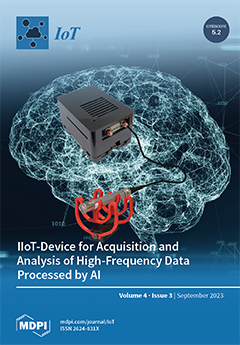This paper presents an in-depth contextualized tutorial on Agricultural IoT (Agri-IoT), covering the fundamental concepts, assessment of routing architectures and protocols, and performance optimization techniques via a systematic survey and synthesis of the related literature. The negative impacts of climate change and the
[...] Read more.
This paper presents an in-depth contextualized tutorial on Agricultural IoT (Agri-IoT), covering the fundamental concepts, assessment of routing architectures and protocols, and performance optimization techniques via a systematic survey and synthesis of the related literature. The negative impacts of climate change and the increasing global population on food security and unemployment threats have motivated the adoption of the wireless sensor network (WSN)-based Agri-IoT as an indispensable underlying technology in precision agriculture and greenhouses to improve food production capacities and quality. However, most related Agri-IoT testbed solutions have failed to achieve their performance expectations due to the lack of an in-depth and contextualized reference tutorial that provides a holistic overview of communication technologies, routing architectures, and performance optimization modalities based on users’ expectations. Thus, although IoT applications are founded on a common idea, each use case (e.g., Agri-IoT) varies based on the specific performance and user expectations as well as technological, architectural, and deployment requirements. Likewise, the agricultural setting is a unique and hostile area where conventional IoT technologies do not apply, hence the need for this tutorial. Consequently, this tutorial addresses these via the following contributions: (1) a systematic overview of the fundamental concepts, technologies, and architectural standards of WSN-based Agri-IoT, (2) an evaluation of the technical design requirements of a robust, location-independent, and affordable Agri-IoT, (3) a comprehensive survey of the benchmarking fault-tolerance techniques, communication standards, routing and medium access control (MAC) protocols, and WSN-based Agri-IoT testbed solutions, and (4) an in-depth case study on how to design a self-healing, energy-efficient, affordable, adaptive, stable, autonomous, and cluster-based WSN-specific Agri-IoT from a proposed taxonomy of multi-objective optimization (MOO) metrics that can guarantee an optimized network performance. Furthermore, this tutorial established new taxonomies of faults, architectural layers, and MOO metrics for cluster-based Agri-IoT (CA-IoT) networks and a three-tier objective framework with remedial measures for designing an efficient associated supervisory protocol for cluster-based Agri-IoT networks.
Full article





